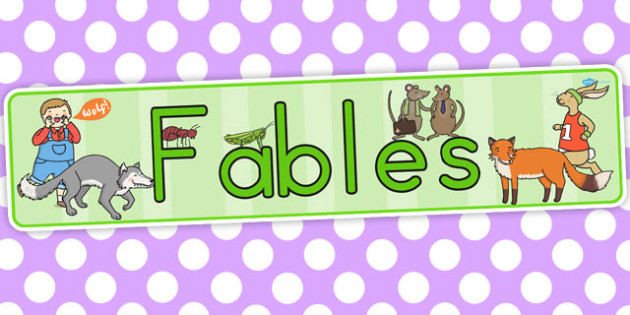FABLES TEXT
FABLE
Definition of Fable
The word fable is derived from the Latin word fibula, which means “a story,†and a derivative of the word fari, which means “to speak.†Fable is a literary device that can be defined as a concise and brief story intended to provide a moral lesson at the end. In literature, it is described as a didactic lesson given through some sort of animal story. In prose and verse, a fable is described through plants, animals, forces, of nature, and inanimate objects by giving them human attributes wherein they demonstrate a moral lesson at the end.
Features of a Fable
- A fable is intended to provide a moral story.
- Fables often use animals as the main characters. They are presented with anthropomorphic characteristics, such as the ability to speak and to reason.
- Fables personify the animal characters.
Examples of Fable in Literature
Example 1:
The Fox and the Crow (By Aesop’s Fables)
“A crow was sitting on a branch of a tree with a piece of cheese in her beak when a fox observed her and set his wits to work to discover some way of getting the cheese. Coming and standing under the tree he looked up and said, ‘What a noble bird I see above me! Her beauty is without equal…’ Down came the cheese, of course, and the Fox, snatching it up, said, ‘You have a voice, madam, I see: what you want is wits.'â€
Aesop is probably the most notable author of famous examples of fable. Aesopian fables put emphasis on the social communications of human beings, and hence the morals he draws deal with realities of life. In this excerpt, Aesop gives a moral lesson that flatterers must not be trusted.
Example 2:Â
Animal Farm (By George Orwell)
“Now, comrades, what is the nature of this life of ours? Let us face it: our lives are miserable, laborious, and short. We are born, we are given just so much food as will keep the breath in our bodies … and the very instant that our usefulness has come to an end … No animal in England knows the meaning of happiness or leisure after he is a year old. No animal in England is free. The life of an animal is misery and slavery …â€
Here, old Major is speaking to other animals. It is presented as the story of the development and emergence of Soviet communism, through an animal fable. He advises the animals to struggle against the humans, telling them that rebellion is the only feasible way out of their miserable situation.
Function of Fable
The purpose of writing fables is to convey a moral lesson and message. Fables also give readers a chance to laugh at the follies of human beings, and they can be employed for the objective of satire and criticism. They are very helpful in teaching children good lessons based on examples. However, in literature, fables are used for didactic purposes at a much broader level.
Sumber :Â https://literarydevices.net/
